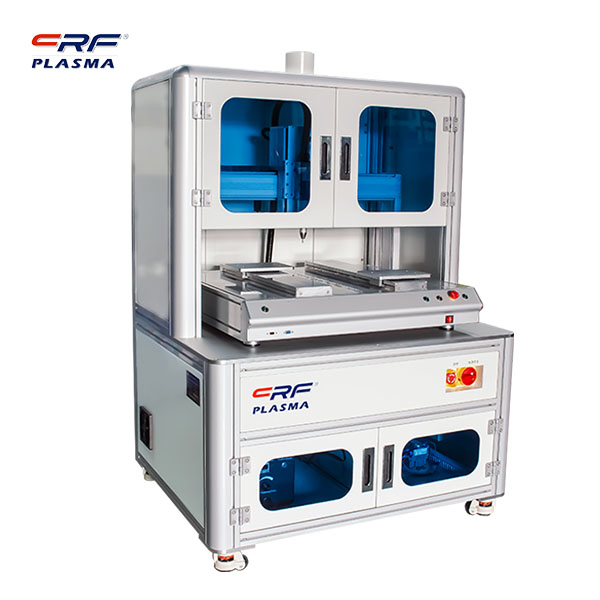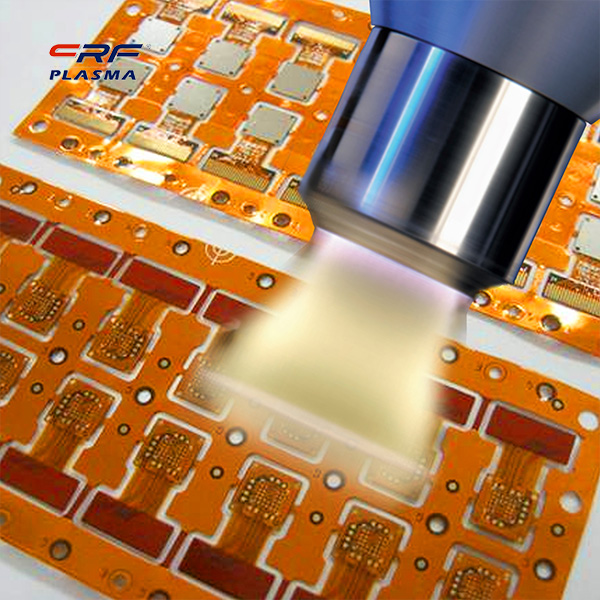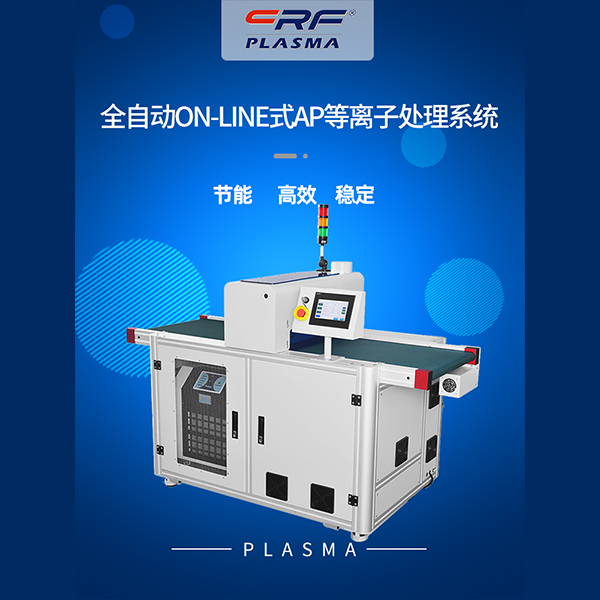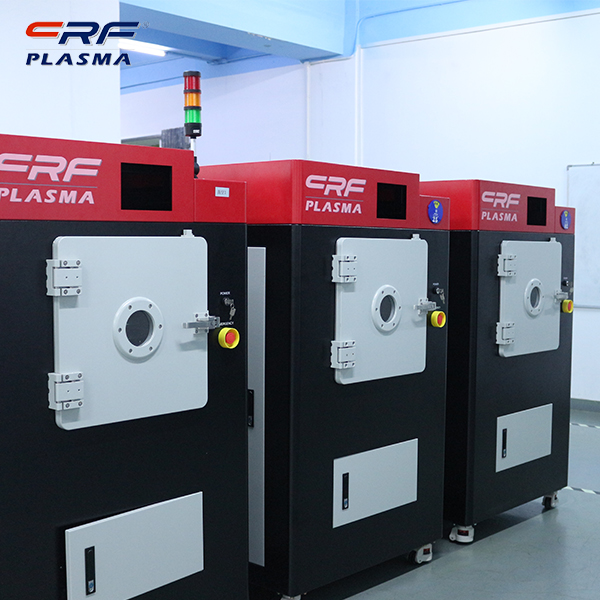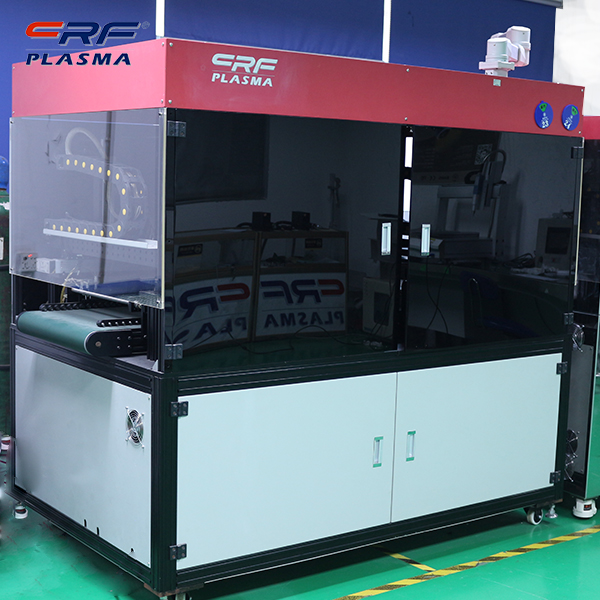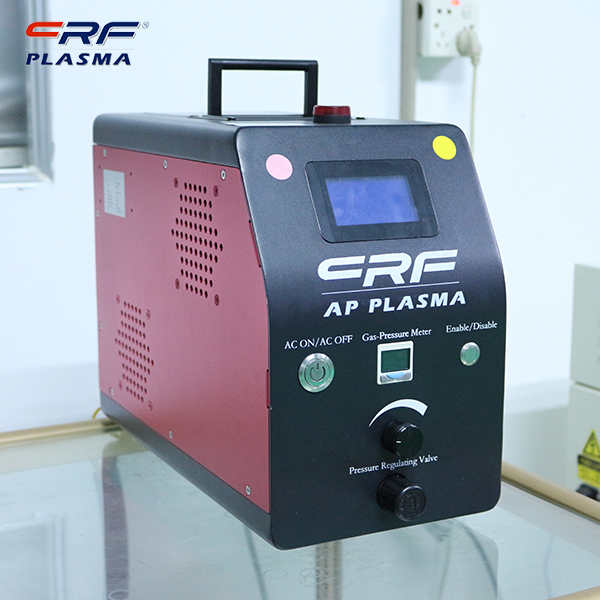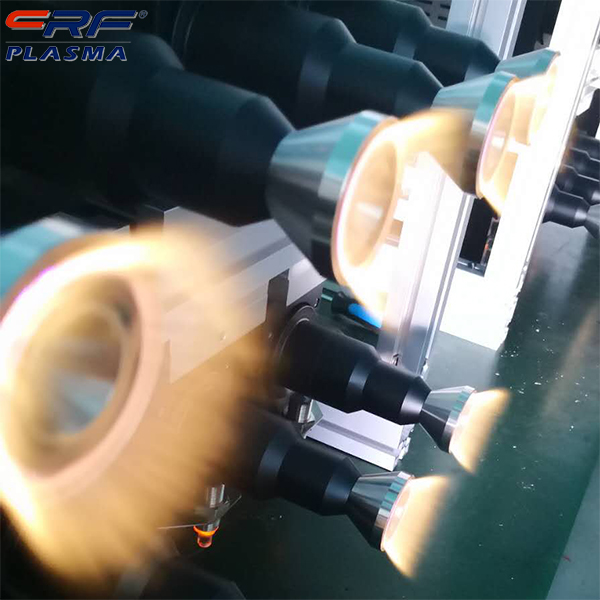
Welcome to Shenzhen Sing Fung Intelligent Manufacturing Co., Ltd.
E-mail:shaobo@sfi-crf.com
Plasma surface activation treatment method of plasma etching process to remove static electricity
- Categories:Company Dynamics
- Author:Plasma cleaning machine-CRF plasma plasma equipment-plasma surface treatment machine manufacturer-chengfeng intelligent manufacturing
- Origin:
- Time of issue:2021-12-27
- Views:
(Summary description)Plasma surface activation treatment method of plasma etching process to remove static electricity: With the development of semiconductor manufacturing technology, the process nodes continue to shrink, and the back-end copper interconnection technology has been widely used. As we all know, the structural basis of copper interconnection technology is the Damascus structure, and the etching of the Damascus structure occupies an important position in the subsequent process. There are many types of subsequent etching methods, such as etching the through hole first and then the channel, etching the channel first and then the through hole and simultaneously etching the through hole channel. Either way, there are often static residues in the wafer after etching, and the quality of static removal directly affects the quality of the channels and through holes. In the cleaning process after the plasma dielectric etching in the later stage, a method commonly used in the industry is to use a water-soluble multi-component organic mixture. After the pollution and cleaning technology of plasma etching, after the "partial dielectric layer removal" step, the water-soluble multi-component organic host mixture (solution A) in the cleaning process can be used to remove the remaining through holes and channels. By-products such as silicon, carbon and copper are removed. After plasma etching, there is a phenomenon of residual electric charge on the surface of the copper wire, which will cause serious copper loss in the subsequent solution cleaning process. The change of the cleaning solution can appropriately adjust the electrostatic residue on the wafer. Another cleaning solution (solution B) (the main body of which is an organic electrolyte, and is not easy to undergo oxidation-reduction reactions with copper metal) is used to compare the cleaning effect with the above solution. After cleaning with solution B, the copper metal layer did not show a large area of element sparseness, and the product yield reduction caused by copper loss did not occur. This indicates that the main cause of copper loss is the residual charge on the surface of the wafer, and solution B is not easy to undergo oxidation-reduction reactions with copper metal. However, solution B has a weak cleaning ability for silicon, carbon and copper residues, and has destructive process limitations on the dielectric layers on both sides of the metal layer, resulting in an increase in the dielectric constant (K) value, taking into account the cleaning residue and cleaning Effectively, changing the type of cleaning solution cannot fundamentally solve the problem of residual charge. Plasma surface activation treatment plasma-assisted static elimination optimization method found that the optimization of the plasma-assisted static elimination process is the control of variables such as the pressure of the reaction chamber, the power of the RF power supply, the temperature and the plasma flow rate. The plasma surface activation treatment plasma uniformity, the optimization of the RF power off method, and the optimization of the auxiliary program are three ways to reduce the residual charge on the chip. In the process of removing static electricity, the plasma assists the process steps of removing static electricity from the wafer, and under the premise of using the cleaning solution commonly used in the industry, the charge amount of the wafer is reduced, and finally the product yield is improved to a certain extent in the post-etching stage. The de-static experiment process involves radio frequency power supply, coupling capacitor, adsorption device, pumping valve and plasma input device, etc. When the RF power supply is connected to the wafer in reactive ion etching, statistically, the probability of electrons hitting the wafer is greater than that of positive ions. Because of their high reaction characteristics, electrons are more likely to be absorbed by the wafer surface, resulting in charge accumulation. Too high concentration of plasma surface activation treatment plasma forms a local electrostatic field with the surface of the wafer, which inhibits the process of plasma-assisted destaticization, and the potential mutation occurs. The overall potential of the wafer varies greatly, which deviates from the target value and prevents the wafer from being separated from the adsorption device. When the radio frequency power is reduced to zero in proportion to time, the overall potential of the wafer changes less and the static removal process is more stable. The plasma-assisted de-static process has been optimized; and relying on the detection of the residual charge on the wafer and the analysis of the metal layer by the transmission electron microscope to optimize the feasibility and effectiveness of the process. The optimization process has a wide range of applications and can be used to improve process reliability and product yield. However, the opti
Plasma surface activation treatment method of plasma etching process to remove static electricity
(Summary description)Plasma surface activation treatment method of plasma etching process to remove static electricity:
With the development of semiconductor manufacturing technology, the process nodes continue to shrink, and the back-end copper interconnection technology has been widely used. As we all know, the structural basis of copper interconnection technology is the Damascus structure, and the etching of the Damascus structure occupies an important position in the subsequent process. There are many types of subsequent etching methods, such as etching the through hole first and then the channel, etching the channel first and then the through hole and simultaneously etching the through hole channel. Either way, there are often static residues in the wafer after etching, and the quality of static removal directly affects the quality of the channels and through holes.
In the cleaning process after the plasma dielectric etching in the later stage, a method commonly used in the industry is to use a water-soluble multi-component organic mixture. After the pollution and cleaning technology of plasma etching, after the "partial dielectric layer removal" step, the water-soluble multi-component organic host mixture (solution A) in the cleaning process can be used to remove the remaining through holes and channels. By-products such as silicon, carbon and copper are removed. After plasma etching, there is a phenomenon of residual electric charge on the surface of the copper wire, which will cause serious copper loss in the subsequent solution cleaning process.
The change of the cleaning solution can appropriately adjust the electrostatic residue on the wafer. Another cleaning solution (solution B) (the main body of which is an organic electrolyte, and is not easy to undergo oxidation-reduction reactions with copper metal) is used to compare the cleaning effect with the above solution. After cleaning with solution B, the copper metal layer did not show a large area of element sparseness, and the product yield reduction caused by copper loss did not occur. This indicates that the main cause of copper loss is the residual charge on the surface of the wafer, and solution B is not easy to undergo oxidation-reduction reactions with copper metal. However, solution B has a weak cleaning ability for silicon, carbon and copper residues, and has destructive process limitations on the dielectric layers on both sides of the metal layer, resulting in an increase in the dielectric constant (K) value, taking into account the cleaning residue and cleaning Effectively, changing the type of cleaning solution cannot fundamentally solve the problem of residual charge.
Plasma surface activation treatment plasma-assisted static elimination optimization method found that the optimization of the plasma-assisted static elimination process is the control of variables such as the pressure of the reaction chamber, the power of the RF power supply, the temperature and the plasma flow rate. The plasma surface activation treatment plasma uniformity, the optimization of the RF power off method, and the optimization of the auxiliary program are three ways to reduce the residual charge on the chip. In the process of removing static electricity, the plasma assists the process steps of removing static electricity from the wafer, and under the premise of using the cleaning solution commonly used in the industry, the charge amount of the wafer is reduced, and finally the product yield is improved to a certain extent in the post-etching stage.
The de-static experiment process involves radio frequency power supply, coupling capacitor, adsorption device, pumping valve and plasma input device, etc. When the RF power supply is connected to the wafer in reactive ion etching, statistically, the probability of electrons hitting the wafer is greater than that of positive ions. Because of their high reaction characteristics, electrons are more likely to be absorbed by the wafer surface, resulting in charge accumulation. Too high concentration of plasma surface activation treatment plasma forms a local electrostatic field with the surface of the wafer, which inhibits the process of plasma-assisted destaticization, and the potential mutation occurs. The overall potential of the wafer varies greatly, which deviates from the target value and prevents the wafer from being separated from the adsorption device. When the radio frequency power is reduced to zero in proportion to time, the overall potential of the wafer changes less and the static removal process is more stable.
The plasma-assisted de-static process has been optimized; and relying on the detection of the residual charge on the wafer and the analysis of the metal layer by the transmission electron microscope to optimize the feasibility and effectiveness of the process. The optimization process has a wide range of applications and can be used to improve process reliability and product yield. However, the opti
- Categories:Company Dynamics
- Author:Plasma cleaning machine-CRF plasma plasma equipment-plasma surface treatment machine manufacturer-chengfeng intelligent manufacturing
- Origin:
- Time of issue:2021-12-27 16:53
- Views:
Plasma surface activation treatment method of plasma etching process to remove static electricity:
With the development of semiconductor manufacturing technology, the process nodes continue to shrink, and the back-end copper interconnection technology has been widely used. As we all know, the structural basis of copper interconnection technology is the Damascus structure, and the etching of the Damascus structure occupies an important position in the subsequent process. There are many types of subsequent etching methods, such as etching the through hole first and then the channel, etching the channel first and then the through hole and simultaneously etching the through hole channel. Either way, there are often static residues in the wafer after etching, and the quality of static removal directly affects the quality of the channels and through holes.
 In the cleaning process after the plasma dielectric etching in the later stage, a method commonly used in the industry is to use a water-soluble multi-component organic mixture. After the pollution and cleaning technology of plasma etching, after the "partial dielectric layer removal" step, the water-soluble multi-component organic host mixture (solution A) in the cleaning process can be used to remove the remaining through holes and channels. By-products such as silicon, carbon and copper are removed. After plasma etching, there is a phenomenon of residual electric charge on the surface of the copper wire, which will cause serious copper loss in the subsequent solution cleaning process.
In the cleaning process after the plasma dielectric etching in the later stage, a method commonly used in the industry is to use a water-soluble multi-component organic mixture. After the pollution and cleaning technology of plasma etching, after the "partial dielectric layer removal" step, the water-soluble multi-component organic host mixture (solution A) in the cleaning process can be used to remove the remaining through holes and channels. By-products such as silicon, carbon and copper are removed. After plasma etching, there is a phenomenon of residual electric charge on the surface of the copper wire, which will cause serious copper loss in the subsequent solution cleaning process.
The change of the cleaning solution can appropriately adjust the electrostatic residue on the wafer. Another cleaning solution (solution B) (the main body of which is an organic electrolyte, and is not easy to undergo oxidation-reduction reactions with copper metal) is used to compare the cleaning effect with the above solution. After cleaning with solution B, the copper metal layer did not show a large area of element sparseness, and the product yield reduction caused by copper loss did not occur. This indicates that the main cause of copper loss is the residual charge on the surface of the wafer, and solution B is not easy to undergo oxidation-reduction reactions with copper metal. However, solution B has a weak cleaning ability for silicon, carbon and copper residues, and has destructive process limitations on the dielectric layers on both sides of the metal layer, resulting in an increase in the dielectric constant (K) value, taking into account the cleaning residue and cleaning Effectively, changing the type of cleaning solution cannot fundamentally solve the problem of residual charge.
Plasma surface activation treatment plasma-assisted static elimination optimization method found that the optimization of the plasma-assisted static elimination process is the control of variables such as the pressure of the reaction chamber, the power of the RF power supply, the temperature and the plasma flow rate. The plasma surface activation treatment plasma uniformity, the optimization of the RF power off method, and the optimization of the auxiliary program are three ways to reduce the residual charge on the chip. In the process of removing static electricity, the plasma assists the process steps of removing static electricity from the wafer, and under the premise of using the cleaning solution commonly used in the industry, the charge amount of the wafer is reduced, and finally the product yield is improved to a certain extent in the post-etching stage.
The de-static experiment process involves radio frequency power supply, coupling capacitor, adsorption device, pumping valve and plasma input device, etc. When the RF power supply is connected to the wafer in reactive ion etching, statistically, the probability of electrons hitting the wafer is greater than that of positive ions. Because of their high reaction characteristics, electrons are more likely to be absorbed by the wafer surface, resulting in charge accumulation. Too high concentration of plasma surface activation treatment plasma forms a local electrostatic field with the surface of the wafer, which inhibits the process of plasma-assisted destaticization, and the potential mutation occurs. The overall potential of the wafer varies greatly, which deviates from the target value and prevents the wafer from being separated from the adsorption device. When the radio frequency power is reduced to zero in proportion to time, the overall potential of the wafer changes less and the static removal process is more stable.
The plasma-assisted de-static process has been optimized; and relying on the detection of the residual charge on the wafer and the analysis of the metal layer by the transmission electron microscope to optimize the feasibility and effectiveness of the process. The optimization process has a wide range of applications and can be used to improve process reliability and product yield. However, the optimization method also increases process steps and costs. The plasma uniformity of plasma surface activation treatment can be optimized and the power-off method can be optimized, and the DOE can be used to optimize at the same time, so as to achieve the purpose of reducing costs.
Scan the QR code to read on your phone

TEL:0755-3367 3020 / 0755-3367 3019

E-mail:sales-sfi@sfi-crf.com

ADD:Mabao Industrial Zone, Huangpu, Baoan District, Shenzhen






